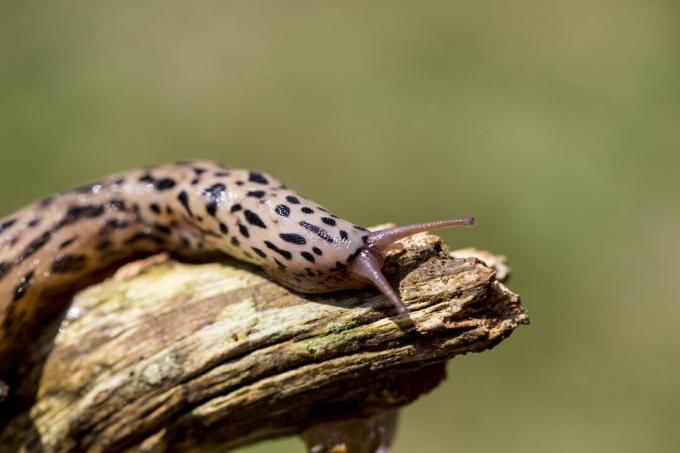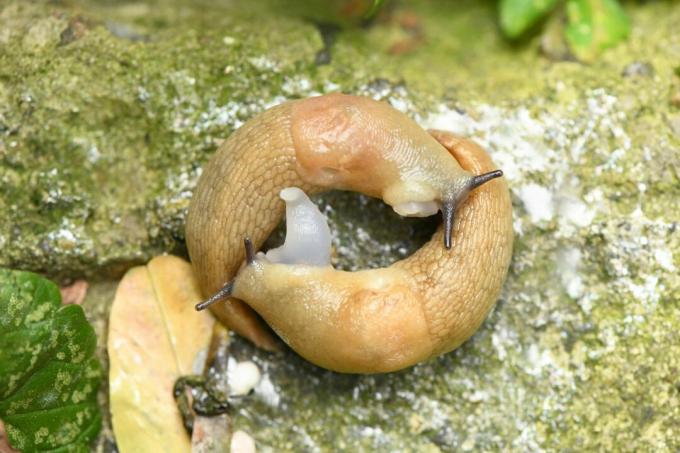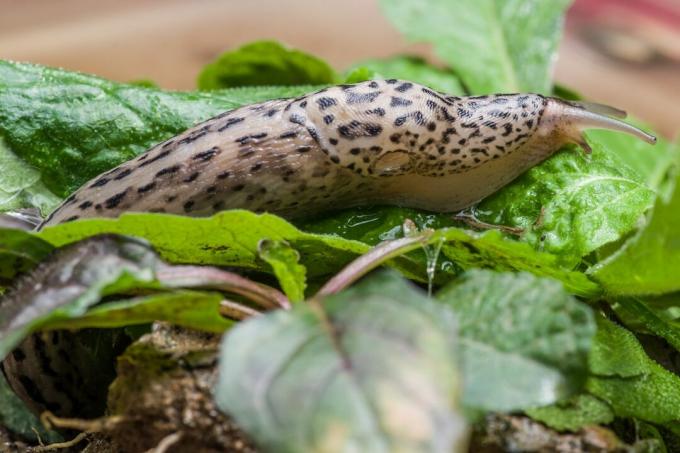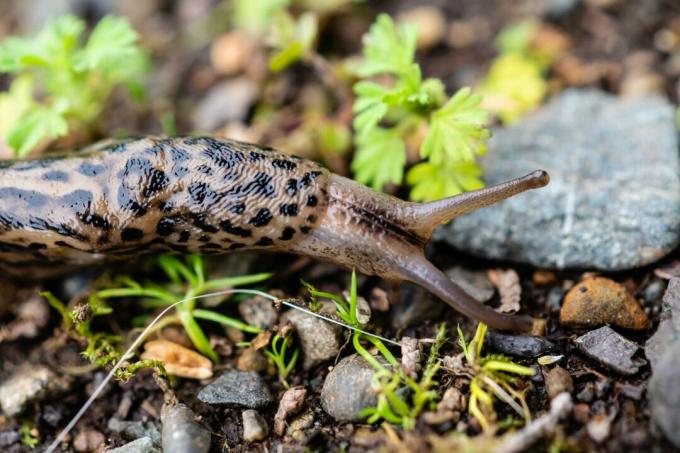Tiger slugs not only attract attention with their interesting body markings, but are also considered beneficial against slugs. We present the special garden dwellers here.

When a large, tabby slug appears in the garden, many a gardener first becomes concerned about his lettuce. But a second look is worthwhile: the tiger slug (Limax maximus) also called tiger slug. This article explains what a tiger slug is, how it lives and whether it is actually useful against slugs in the garden.
contents
- Tiger slugs: appearance and way of life
-
Tiger slugs as beneficial insects in the garden
- Does the tiger slug eat snails?
- Attract tiger slugs and settle in the garden
Tiger slugs: appearance and way of life
As the name suggests, the tiger slug has a striking pattern. A black tiger pattern can be found on the rear half of the body on a brown-grey background, which merges into a leopard pattern towards the head of the animal. In English, the species is therefore also called "leopard slug". With a body length of up to 20 cm, the tiger slug is next to the black slug (
Limax cinereoniger) one of the largest native slug species. The sole of the tiger slug is white and the breathing hole is located behind the center of the mantle shield. A confusion of the tiger slug with less useful or even poisonous ones snail species is unlikely due to characteristic appearance. As a cultural successor, the tiger slug can be found in parks, cemeteries, damp cellars - or in the garden.
snail or snail: slugs (Limacidae) belong to the snail family and are actually a family of slugs. They are native to Europe, although some species are now found worldwide. The position of the breathing hole on the coat shield is used to distinguish between slugs and snails. In slugs, the breathing hole is always behind the middle of the mantle shield, in snails, on the other hand, it is to the right in front of the middle of the mantle shield.
The slug family also includes the field slug family with the netted field slug (Deroceras reticulatum) as a representative and the family of slugs with the Spanish slug (Arion vulgaris).
By the way: In the case of tiger slugs, mating is a particularly spectacular event in their two to three year lifespan. If two slugs ready to mate are found, they crawl to a raised, vertical spot, where they crawl behind one another in a tight circle and secrete mucus. After a while, the slugs entwine and abseil down a slime thread that is up to 40 cm long. Fertilization takes place at this dizzy height. Then one of the animals drops to the ground while the other crawls back up the slime thread. The colorless eggs are laid in irregular clusters between June and September.

Tiger slugs as beneficial insects in the garden
The tiger slug is often praised and even sold as a valuable beneficial against slugs in the garden. However, some gardeners see it as useless and even report that the tiger slug feasts on lettuce and vegetables just like its unwanted relatives. What is correct now? Does the tiger snail eat other snails or not? A look at the versatile diet of the slug provides a remedy.

Does the tiger slug eat snails?
Yes, the tiger slug eats snail eggs, small slugs of other species, or injured and dead slugs. As a rule, he does not become cannibalistic. However, its diet also includes mushrooms, carrion and dead plant remains.
Regardless of its size, the tiger slug eats slug eggs and only very rarely fresh plant parts are eaten. Thus, tiger slugs are to be classified as beneficial insects in the garden. And if one of the animals does bite into the lettuce, you should be lenient - after all, the tiger slug keeps its much more voracious relatives in check.

A plague of snails cannot be dealt with by the tiger slug alone. However, a mitigation and stabilization of the slug population - especially due to egg eating - is to be expected.
Are tiger slugs dangerous? No, the tiger slug is non-toxic to humans and pets and can be handled without hesitation. The tiger slug only becomes dangerous to other snails.
Attract tiger slugs and settle in the garden
As a rule, the animals appear in the garden all by themselves. Where appropriate shelter and food are made available, the site-loyal animals can be settled easily. Heaps of branches or stones, compost or lying roof tiles serve as shelter options. Since dead plant remains are an important food source for the slugs, they can be left as mulch, for example.
The purchase of tiger slugs is possible, but only makes sense if no specimens are found in the garden despite the structures mentioned.

Also one drywall can provide habitat for the tiger slug. Many other native animals and plants can also settle here, which increases the biodiversity in the garden.



